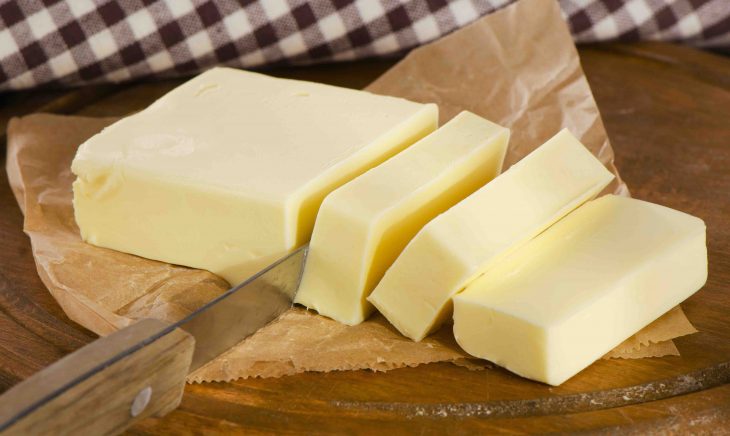
Butter, a beloved dairy product, has been a staple ingredient in kitchens around the world for centuries. Its rich flavor, creamy texture, and versatility make it a cherished addition to numerous culinary creations. In this article, we invite you to explore the captivating world of butter as we reveal 15 fascinating facts about this delightful dairy product.
Ancient Origins
Butter has a long history dating back thousands of years. It is believed to have been first made in ancient Mesopotamia, around 8,000-6,000 BCE, where it was likely discovered by accident through the churning of milk.
Butter Churning
Churning is the process by which butter is traditionally made. The cream is agitated vigorously until it separates into butterfat and buttermilk. This time-honored technique has been passed down through generations.
Composition and Texture
Butter primarily consists of butterfat, water, and milk solids. The percentage of butterfat in butter can vary, with higher fat content leading to a creamier texture and richer taste.
Culinary Versatility

Butter is a versatile ingredient used in various cooking methods, including baking, sautéing, and frying. It adds flavor, moisture, and richness to dishes, enhancing their taste and texture.
Butter Grades
Butter is graded based on its quality and flavor. Grades such as AA, A, and B are assigned, with AA being the highest quality. Factors such as flavor, texture, color, and absence of defects determine the grading.
Clarified Butter
Clarified butter, also known as ghee, is a form of butter where the milk solids and water content have been removed. It has a higher smoke point and longer shelf life, making it ideal for high-heat cooking.
Cultural Significance
Butter holds cultural significance in various cuisines and traditions worldwide. From the clarified butter used in Indian cuisine to the indulgent French butter croissants, it plays a pivotal role in culinary heritage.
Nutritional Value
Butter is a concentrated source of calories and saturated fats. However, it also contains fat-soluble vitamins like vitamin A, vitamin E, and vitamin K2. Moderation is key when enjoying this delicious dairy delight.
Butter Varieties
Besides traditional cow’s milk butter, there are various other types of butter available. These include goat butter, sheep butter, and even plant-based butter alternatives for those with dietary preferences or restrictions.
Butter Sculptures
Butter has been used as a medium for creating intricate sculptures. Butter sculptures are a popular attraction at state fairs and exhibitions, showcasing the impressive artistry that can be achieved with this creamy medium.
Butter Making Competitions
Butter-making competitions are held in some regions, where contestants compete to create the best-tasting butter. These competitions celebrate the craftsmanship and dedication of butter makers.
Butter Preservation
Butter can be preserved by storing it in a cool, dark place or by refrigeration. Butter dishes with lids or butter keepers can help maintain its freshness and prevent it from absorbing unwanted flavors.
Flavored Butter

Butter can be infused with various flavors to create tantalizing combinations. From garlic and herb-infused butter to sweet honey butter, these flavored variations add an extra layer of taste to dishes.
Butter in Baking
Butter plays a crucial role in baking, contributing to the texture and flavor of baked goods. It helps create flaky pie crusts, tender cakes, and buttery cookies that melt in your mouth.
Butter in Pop Culture
Butter has made appearances in popular culture, from the iconic “I Can’t Believe It’s Not Butter!” advertising campaign to references in movies and literature. Its creamy allure has captured the imagination of many.
Final Word
Indulge in the richness of butter as you explore these fascinating facts. From its ancient origins to its culinary versatility and cultural significance, butter has earned its place as a cherished ingredient in kitchens worldwide. Embrace the buttery delight and let its creamy goodness elevate your culinary adventures.
Frequently Asked Questions (FAQs)
Is butter healthy or unhealthy?
Butter is a high-fat dairy product that is rich in saturated fats. While it can be enjoyed in moderation as part of a balanced diet, individuals with specific health concerns or dietary restrictions may opt for alternatives or consume it sparingly.
Can lactose-intolerant individuals consume butter?
Most of the lactose in butter is removed during the churning process. As a result, many lactose-intolerant individuals can tolerate butter without adverse effects. However, individuals with severe lactose intolerance should exercise caution or opt for lactose-free butter alternatives.
Can butter be frozen for long-term storage?
Butter can be frozen for long-term storage to extend its shelf life. It is recommended to wrap it tightly to prevent freezer burn. When needed, thaw the butter in the refrigerator before use.
Can you make butter at home?
Yes, butter can be made at home by agitating cream until it separates into butterfat and buttermilk. This can be done using a jar, a mixer, or traditional butter churns.
What is the smoke point of butter?
The smoke point of butter is relatively low compared to other cooking fats, around 350°F (175°C). When cooking at higher temperatures, clarified butter or oils with higher smoke points are often preferred.
Was this page helpful?
Our commitment to delivering trustworthy and engaging content is at the heart of what we do. Each fact on our site is contributed by real users like you, bringing a wealth of diverse insights and information. To ensure the highest standards of accuracy and reliability, our dedicated editors meticulously review each submission. This process guarantees that the facts we share are not only fascinating but also credible. Trust in our commitment to quality and authenticity as you explore and learn with us.
